Samuel Pepys Wrote Isaac Newton Asking Which Event is More Likely to Occur
Problem
Samuel Pepys wrote Isaac Newton to ask which of three events is more likely: that a person get (a) at least 1 six when 6 dice are rolled (b) at least two sixes when 12 dice are rolled, or (c) at least 3 sixes when 18 dice are rolled. What is the answer?
B. (b) is more likely than (a) and (c)
C. (c) is more likely than (a) and (b)
D. (a), (b), and (c) are equally likely
Strength of Temporary Earth Retaining Wall Made from Wooden Planks
Situation
A temporary earth retaining wall consists of wooden plank driven vertically into the ground. The wall is designed to resist 2.4 m height of soil.
Cross-sectional dimensions of the plank = 300 mm wide × 75 mm thick
Allowable bending stress of the plank = 10.4 MPa
Allowable shear stress of the plank = 0.8 MPa
Unit weight of retained soil = 17.3 kN/m3
Active earth pressure coefficient = 1/3
1. Calculate the maximum flexural stress.
| A. 12.7 MPa | C. 8.6 MPa |
| B. 14.2 MPa | D. 10.1 MPa |
2. Calculate the maximum shear stress.
| A. 1.11 MPa | C. 0.99 MPa |
| B. 0.33 MPa | D. 0.77 MPa |
3. Calculate the minimum thickness of the plank to prevent failure.
| A. 90 mm | C. 110 mm |
| B. 80 mm | D. 100 mm |
Burning Bale from Catapult to Travel 150 ft and Clear Over 35 ft Castle Wall
Problem
A catapult is placed 100 ft from the castle wall, which is 35 feet high. The soldier wants the burning bale of hay to clear the top of the wall and land 50 feet inside the castle wall. If the initial velocity of the bale is 70 feet per second, then at what angle should the bale of hay be launched so that it travel 150 feet and pass over the castle wall. Use g = 32 ft/sec2.
| A. 49.8° | C. 39.2° |
| B. 50.8° | D. 40.2° |
Spinning Spherical Target: Probability for Three Marksmen to Hit on the Same Hemisphere
Problem
Three marksman simultaneously shoot and hit a rapidly spinning spherical target. What is the probability that the three points of impact lie on the same hemisphere?
| A. 0 | C. 1 |
| B. 1/2 | D. 2/3 |
Example 02: Notched beam with concentrated load
Problem
A 150 mm by 300 mm wooden beam having a simple span of 6 meters carries a concentrated load P at its midspan. It is notched at the supports as shown in the figure. For this problem, all calculations are based on shear alone using the 2010 NSCP specification given below. Allowable shear stress of wood, Fv = 1.0 MPa.
- If P = 30 kN, calculate the maximum allowable depth (millimeters) of notches at the supports.
- 88
- 62
- 238
- 212
- If the depth of notches is 100 mm, what is the safe value of P (kiloNewton) the beam can carry.
- 26.67
- 17.78
- 8.89
- 13.33
- If P = 25 kN and the depth of notches is 150 millimeters, what is the shear stress (MegaPascal) near the supports.
- 0.83
- 6.67
- 1.67
- 3.33
NSCP 2010 Section 616.4: Horizontal Shear in Notched Beams
When rectangular-shaped girder, beams or joists are notched at points of support on the tension side, they shall meet the design requirements of that section in bending and in shear. The horizontal shear stress at such point shall be calculated by:
Where:
$d'$ = actual depth of beam at notch.
Example 01: Safe Uniform Load for a Beam that was Notched at the Tension Fibers at Supports
Problem
A 75 mm × 150 mm beam carries a uniform load wo over the entire span of 1.2 m. Square notches 25 mm deep are provided at the bottom of the beam at the supports. Calculate the safe value of wo based on shear alone.
Allowable shear normal to grain = 1.85 MPa
Example 02: Maximum Concentrated Load a Box Beam Can Carry
Problem
A beam is built up by nailing together 25 mm thick planks to form a 200 mm × 250 mm box section as shown. The nails are spaced 125 mm apart and each can carry a shearing force of up to 1.3 kN. The beam is simply supported for a span of 3.6 m and to carry a concentrated load P at the third point of the span. The allowable shearing stress of the section is 0.827 MPa.
- Determine the largest value of P that will not exceed the allowable shearing stress of the beam or the allowable shearing force of the nails.
- What is the maximum flexural stress of the beam for the load P computed in Part (1)?
Example 01: Spacing of Screws in Box Beam made from Rectangular Wood
Problem
A concentrated load P is carried at midspan by a simply supported 4-m span beam. The beam is made of 40-mm by 150-mm timber screwed together, as shown. The maximum flexural stress developed is 8.3 MPa and each screw can resist 890 N of shear force.
- Determine the spacing of screws at A.
- Determine the spacing of screws at B.

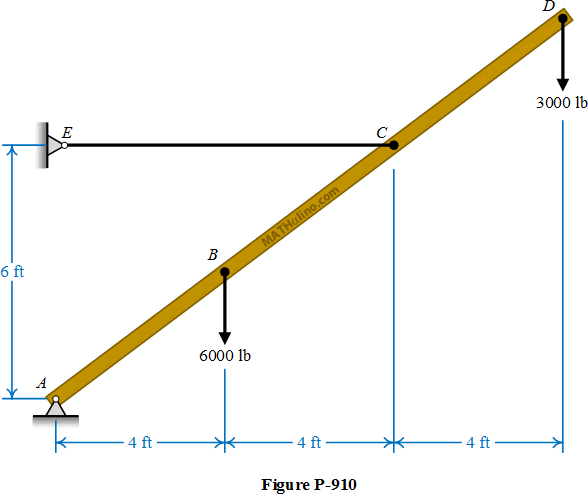

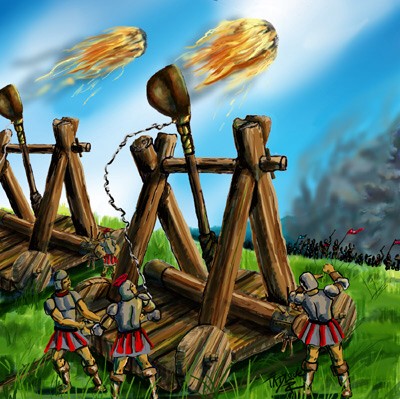
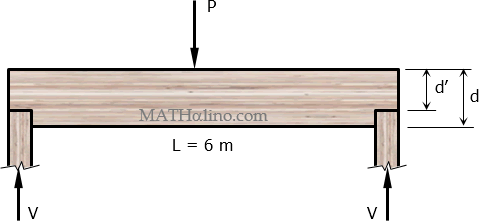
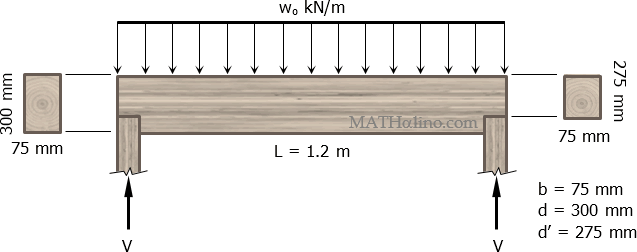
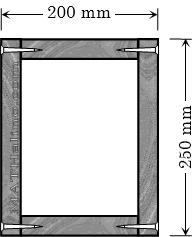
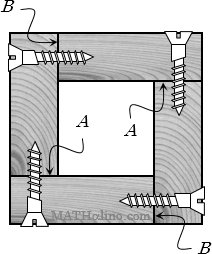
Recent comments
(…